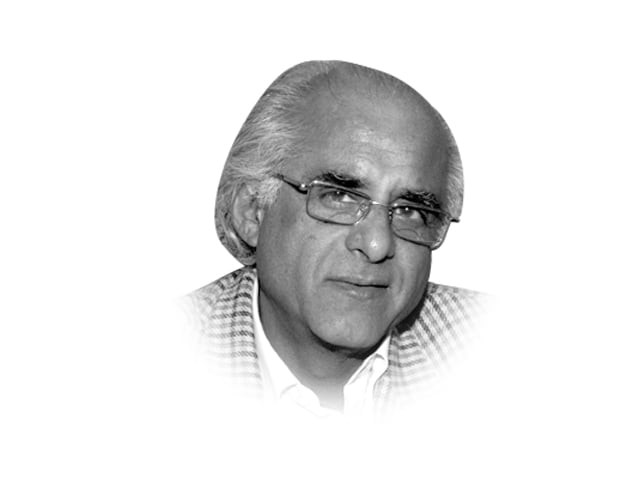Dharti Mata
Dharti Mata is still revered and resorted to by Muslims and her shrines are spread across the country.

Dharti Mata
The goddess wears fancy, sometimes even bizarre, head-dresses, but it is her extra wide hips and an equally large bust — the primary emblem of feminity and therefore of fertility — that are noteworthy. This distorted, even grotesque, imagery symbolises the goddess’ fecundity.
In the early years of the second millennium BCE, the Aryans displaced the ancient people of the Sindhu Valley. From the 13 skeletons discovered in one building in the ruined city of Moen jo Daro, it was first surmised that the city had been sacked by the marauding newcomers. But the masterful work of Mark Kenoyer (Ancient Cities of the Indus Valley Civilisation) shows that the influx was not all blood and gore and that there was a fair degree of integration and assimilation. This was especially true in the case of the adoption of the ancient pantheon by the newcomers.
Among others deities, the indigenous Mother Goddess became the model for the Aryan Dharti Mata or Mother Earth (Lord Shiva, too, is modelled after a pre-Aryan Sindhu Valley god). As the goddess of the Sindhu Valley, Dharti Mata was the great bestower of fertility; she was the rejuvenator of all living forms and of the earth itself. When the pious follower of the Sanatama Dharma rises from his bed, he invokes her, and when the cow is milked, the first five streams of milk are permitted to fall on the earth in her honour.
Over the millennia, Dharti Mata came to be celebrated as the giver of sons and wealth. She was invoked when the plough first broke the ground for the new season. The keepers of large herds, mostly the Gujjar clan in the subcontinent, were her most ardent believers: They could not afford to offend this powerful master of fertility so that their herds may multiply. By extension, anyone else with cattle in the yard, even if only a pair or two, worshipped Dharti Mata and sought to appease her. Others prayed to her for sons.
Now, the normal cycle of life for Dharti Mata begins in spring when she brings forth new life as the earth takes on fresh growth, grows richer through the summer and monsoon rains, and begins to wither away by late October. Through the winter months, the earth lies moribund until spring nudges it back into splendour again. Consequently, in parts of Sindh and Punjab (not having been able to see this worship in India, I cannot comment), the fertility rites connected with Dharti Mata take place in spring. That, however, does not mean that one is prevented from visiting a Dharti Mata shrine for blessing at any other time of year.
Years ago, my friend, Murlidhar Dawani of Karachi, who had done paramount research on fertility rites in Sindh, told me that besides the usual rituals, some believers sacrificed a male goat and let the animal’s blood soak the earth. This may well have been a deviation from spilling the first few streams of milk on the ground. Be that as it may, Murlidhar also said that the sacrificial animal must always be black.
There is yet another prerequisite for Dharti Mata: Her shrine is never ever to be covered by a dome. It must always look up to the blue sky above. This condition is also shared by other local deities like Suraj Devta and Jamuna Ji and by the Muslim saint Khwaja Khizer. In Pakistan, however, both Khwaja Khizer and Dharti Mata have lost out on this open-to-the-sky pre-condition.
Fisherfolk invoking Khwaja Khizer as they set out on their daily routine is not an untoward sight. But even Dharti Mata is still revered and resorted to by Muslims and her shrines are spread across the country. Only, in Pakistan, she now wears another garb, one that will not offend the Muslim mind.
Published in The Express Tribune, March 19th, 2011.













COMMENTS
Comments are moderated and generally will be posted if they are on-topic and not abusive.
For more information, please see our Comments FAQ